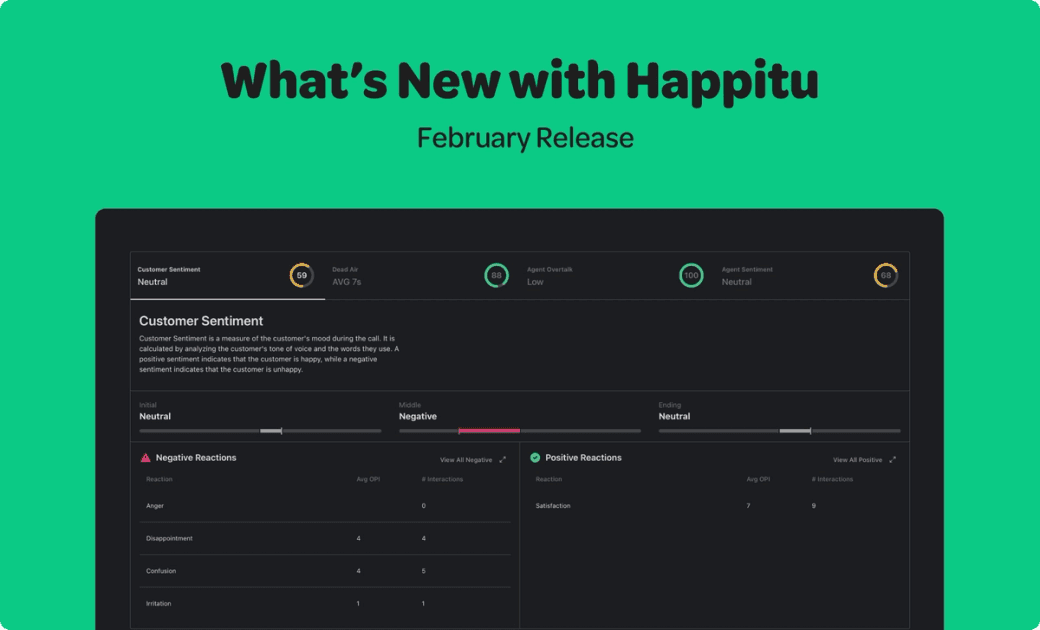Do you know the difference between Conversation Intelligence and Transcript Analysis? The waters are quite muddy here and the terms are often used interchangeably however there are differences between the two terms and we will explore those terms and how they’re different but also how they might work together to achieve your goals.
What is Transcript Analysis?
To begin our journey into the difference between Conversation Intelligence and Transcript Analysis, we’ll take a look at Transcript Analysis, also referred to as Speech Analysis.
First, you take a conversation and transcribe it into text. Often this is done in the context of a business phone call with a contact center or call center. Call transcription can be done manually but advances in ASR or Automatic Speech Recognition Software facilitate full automation of this process today. This can be done in real-time or at any point after the call is recorded using the call recording. From here, the customer conversation can be analyzed for specific things. It’s becoming more common for AI (Artificial Intelligence) to analyze each word or phrase to identify specific instances of key words or phrases. This can be useful for managers or supervisors as it can help indicate gaps in performance, ultimately allowing managers to spend less time digging through data and more time solving those issues.
Let’s shift gears a bit and dig into Conversation Intelligence.
What is Conversation Intelligence?
It’s important to realize that with Conversation Intelligence, while still analyzing the speech, is now also analyzing the conversation as a whole and the sentiments involved. This process can also be automated by using AI (Artificial intelligence) and ML (Machine Learning). What makes this special is that human bias is removed and an objective score based on millions of data points provides an accurate depiction of how people are reacting during a conversation., meaning it’s taking into account what was said as well as what the statement is reacting to. This scoring can reveal agent performance opportunities and customer attitudes toward products and services.
What Can Conversation Intelligence Software Do for Me?
This is a really exciting time for this technology. Many organizations are beginning to understand how useful it can be to use Conversation Intelligence Solutions. Managers are using these tools to sift through hours of data in seconds to ensure Quality Assurance goals are met. These tools give managers the ability to analyze 100% of customer interactions and customer calls, something that would have been virtually impossible without AI. Analyzing the transcripts can help pinpoint team performance issues and even help managers determine if their team members are saying the right (or wrong) words and phrases, but it doesn’t tell them if their team members are listening and responding appropriately to what their customers are saying. Conversation Intelligence bridges that gap. Forward-thinking organizations are now using AI and ML to determine what opportunities to coach so their teams can respond better to their customer’s needs. With two very powerful tools to help listen and analyze each and every conversation that with customers, they can gain a much deeper understanding of both what customers need and want and what agents are doing for (and sometimes to) Customer Experience (CX). Knowing how every conversation compares to expectations, can create teachable moments for our team, ultimately boosting customer satisfaction. You can really start to get a much better picture of how customers perceive what you’re saying to them and how you can better address your customers without spending hours listening to calls or customer complaints.
While Transcript Analysis and Conversation Intelligence are different, they can work together to help teams solve different issues. You can use Transcript Analysis to search for specific keywords and phrases. You can use this to determine if your team members are sharing required disclosures or using slang or jargon that should be avoided. Using AI to analyze conversations opens nearly endless practical applications. Now you have the ability to sift through the conversation and analyze the sentiment behind the words.
How Can Different Teams Use Conversation Intelligence Platforms?
Conversation Intelligence Tool integrations within the CRMs can assist sales teams and sales reps by providing actionable insights into sales calls. Sales Managers can use reports to expose top performers and show up to date sales information leading to better sales coaching sessions. Ideally, better coaching sessions will lead to better sales conversations with the customer and improved outcomes. If you’re able to improve team performance and generate more sales leaders, you can really set your business up for success for the future. You can create Custom Sales Dashboards to target Revenue Intelligence driving revenue growth. Another use case is Outbound sales benefiting from AI integrations with automated dialers and pricing built into the CRM so all information is readily available. You can link call data in CRMs for streamlined Follow ups and call tracking improving the workflow.
You can integrate Conversational AI combined with natural language processing (NLP) to create automated messaging applications (chatbots) that can be used as self help tools, freeing up reps for more complicated customer issues. This can really streamline the CX.
Another use case for Conversational AI tools is for onboarding new reps. You can acclimate new reps to the workflow much quicker when they have all the tools they need in one system.
Getting Started
See how Happitu Vision can help you understand what your customers (and your agents) are saying and feeling using our Negative Sentiment Score. Learn more here.



